

Painting on fabric is something that humans have practiced since early civilizations. Technological advancements have contributed to the evolution of this industry. Currently, there are numerous techniques Trusted Source Adventures in a material world | Art | The Guardian In Alison Watt’s monumental canvases, simple folds of cloth magnified assume an irresistible life force www.theguardian.com that one can use to paint on textile. The project you are working on dictates the ideal method to use. Many other factors will come into play before you settle on a technique and fabric. If you are a beginner working on such a DIY project, you can easily get help on the wide web by searching for authoritative sources with the necessary info on how to paint on fabric.
One of the best techniques that favor beginners from all walks of life is permanent markers. According to reviews, the Crafts 4 All Fabrics Marker Pens are among the top-tier products that you will come across. This set has twelve colors, and the dual tips on the markers make application a breeze.
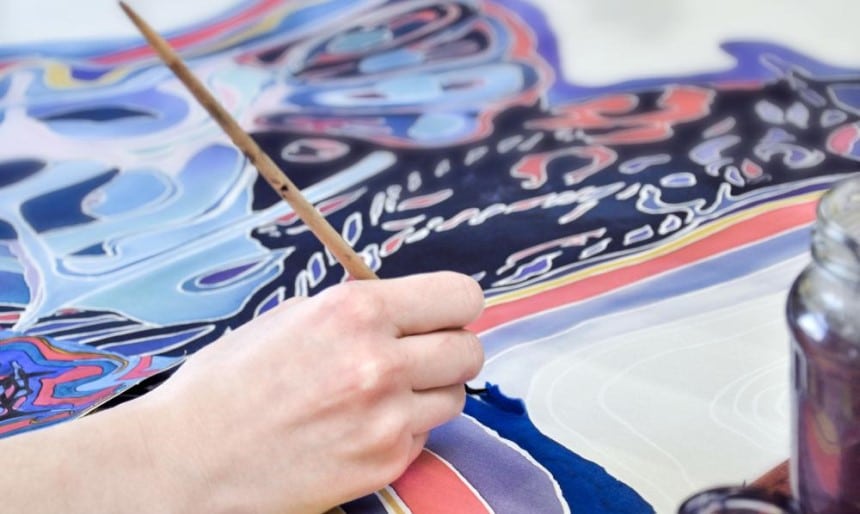 There are many reasons why people choose to paint on fabric. Both large-scale producers and small businesses in this sector want to add value to the product they release to the market, and painting is among those that elevate the aesthetic value of the fabric. Fabric painting may seem like a straightforward task, but it has its fair share of challenges. You will need certain tools and designs to make your venture a success. Here are some of the top things you must think about before starting any fabric painting project.
There are many reasons why people choose to paint on fabric. Both large-scale producers and small businesses in this sector want to add value to the product they release to the market, and painting is among those that elevate the aesthetic value of the fabric. Fabric painting may seem like a straightforward task, but it has its fair share of challenges. You will need certain tools and designs to make your venture a success. Here are some of the top things you must think about before starting any fabric painting project.
Fabric painting involves the use of tools and supplies. The gear you need varies from one project to the next as dictated by certain factors. Planning will help you assemble the correct tools for the task at hand. Some of the things that you will require for any project include.
Paint – you cannot handle a painting project without color. This is one thing you have to review with caution to ensure that you get the best quality available in stores. Fabric paint comes in different varieties availing multiple options for you.
Opaque and transparent are the two fabric paint alternatives. The choice between these two depends on the skills and tools you have.
Applicator – you will need a tool to help with applying the fabric paint onto the surface. One of the common options is using markers. Fabric markers permanent paint is one of the popular variations in both virtual and land-based stores. Reviews from previous users indicate that this is one of the finest sets you can acquire for different projects. The other applicators that you will find include but are not limited to brushes, stencils, sponges, and airbrushes. Your skillset will guide you on the suitable applicator to help you get through the project. Brushes are the hardest to use, but novice fabric painters can utilize the other options. Review all the varieties available and settle for one to works for you.
 You need painting designs to make work easier and save on time, energy, and other resources. It is possible to get ready patterns in the modern world that will make your job more manageable and neat. For most beginners, using ready-made painting designs allows them to produce premium quality work with minimal hassle. When choosing patterns, go for versatile options that you can reuse mainly when making painted fabric in bulk. The material they use for the painting pattern, cost, and how to use the same are among the factors you should consider when buying a design. Some people choose to make their painting design for various reasons. If you decide to go down this path, you should learn certain skills to complete the project.
You need painting designs to make work easier and save on time, energy, and other resources. It is possible to get ready patterns in the modern world that will make your job more manageable and neat. For most beginners, using ready-made painting designs allows them to produce premium quality work with minimal hassle. When choosing patterns, go for versatile options that you can reuse mainly when making painted fabric in bulk. The material they use for the painting pattern, cost, and how to use the same are among the factors you should consider when buying a design. Some people choose to make their painting design for various reasons. If you decide to go down this path, you should learn certain skills to complete the project.
Customizing existing designs is one of the easiest ways to get an idea of where to begin. Simple household items can be used in the process to make it easy to handle and custom-make. Getting help from experts and other sources will help develop a style or improve on an existing one. The solutions you pick for fabric painting should be practical, cost-friendly, and meet the standards of the project you are undertaking. The best fabric markers will help you create intricate designs that stand out and attract the target populace.
Ensure that you have suitable painting designs before you embark on any project to minimize the risk of creating products that will not fit with the deliverables of the project.
When painting on fabric, you have many methods to fall back on. The one you choose should be appropriate for the material you are working with. The supplies you have determine how to proceed with the project at hand. If you are a beginner, it is best to familiarize yourself with different techniques and pick what you can handle without exerting pressure on yourself. Instructions are available on the wide web on how to monogram shirts alongside other straightforward ways to paint on fabric. Below we discuss some of the common ways that people rely on to paint on fabric.
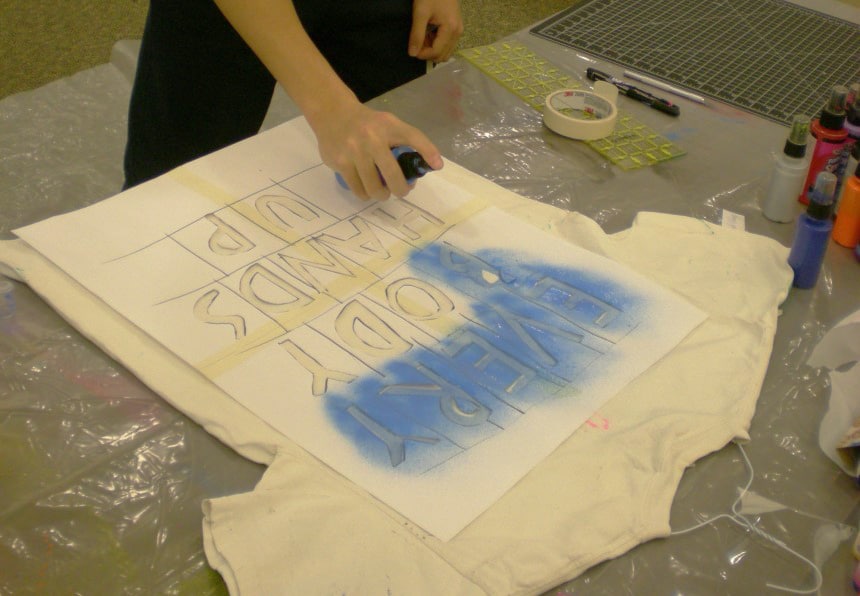 Spray paints are present in the market in different colors. The manufacturers of these products avail an assortment for users to pick from. This is also one of the easiest techniques ideal for beginners. Achieving intricate patterns can be a challenge at first, but once you master the art of spray painting, it becomes more manageable. Important to note is that not all paints are compatible with textile. When buying the spray paint cans, confirm that they are suitable for the fabric to prevent damage to your clothes. You can contact the customer care service of the manufacturing company to know more about their products before you settle on any specific brand. Sprays are versatile and suitable for both small and large projects. The type of tools at your disposal will dictate the kind of projects that you can handle. Cans are best for small DIY projects.
Spray paints are present in the market in different colors. The manufacturers of these products avail an assortment for users to pick from. This is also one of the easiest techniques ideal for beginners. Achieving intricate patterns can be a challenge at first, but once you master the art of spray painting, it becomes more manageable. Important to note is that not all paints are compatible with textile. When buying the spray paint cans, confirm that they are suitable for the fabric to prevent damage to your clothes. You can contact the customer care service of the manufacturing company to know more about their products before you settle on any specific brand. Sprays are versatile and suitable for both small and large projects. The type of tools at your disposal will dictate the kind of projects that you can handle. Cans are best for small DIY projects.
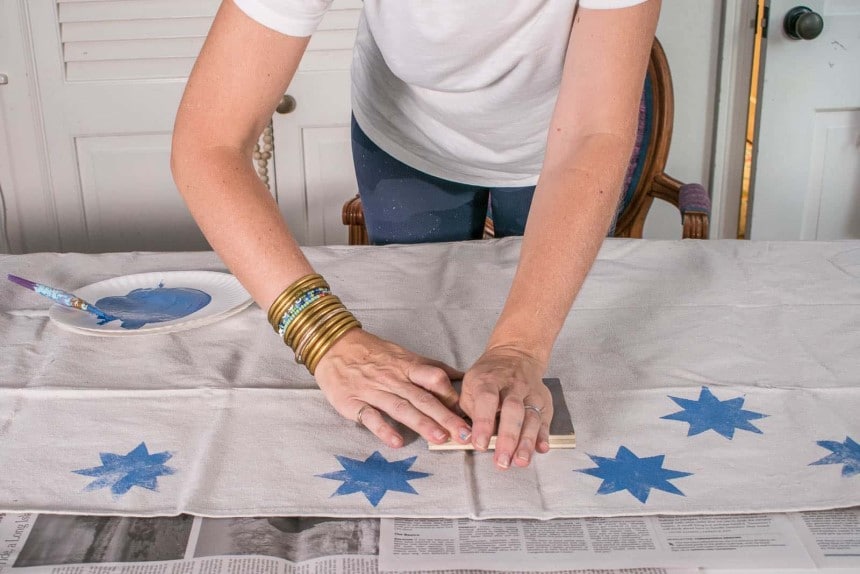 Stamping on fabric is another easy method that you can use to add color to your material. This is also one of the most effective ways to get paint on fabric. If you are working on a large project that requires the same unique design applied on many pieces of fabric, consider stamping as it is fast and reliable. Technology has made it possible for fabric stamping to happen without using too much human resource over the years. One does not require any special skills to stamp on fabric which is why novice painters should consider this method. You need a stamp and paint to get started. Soft materials and heavy body acrylic are among the fabrics that give the best results with this technique. Stamping allows you to apply multiple colors in the same design. The placement can be planned or random, depending on the look you want to achieve.
Stamping on fabric is another easy method that you can use to add color to your material. This is also one of the most effective ways to get paint on fabric. If you are working on a large project that requires the same unique design applied on many pieces of fabric, consider stamping as it is fast and reliable. Technology has made it possible for fabric stamping to happen without using too much human resource over the years. One does not require any special skills to stamp on fabric which is why novice painters should consider this method. You need a stamp and paint to get started. Soft materials and heavy body acrylic are among the fabrics that give the best results with this technique. Stamping allows you to apply multiple colors in the same design. The placement can be planned or random, depending on the look you want to achieve.
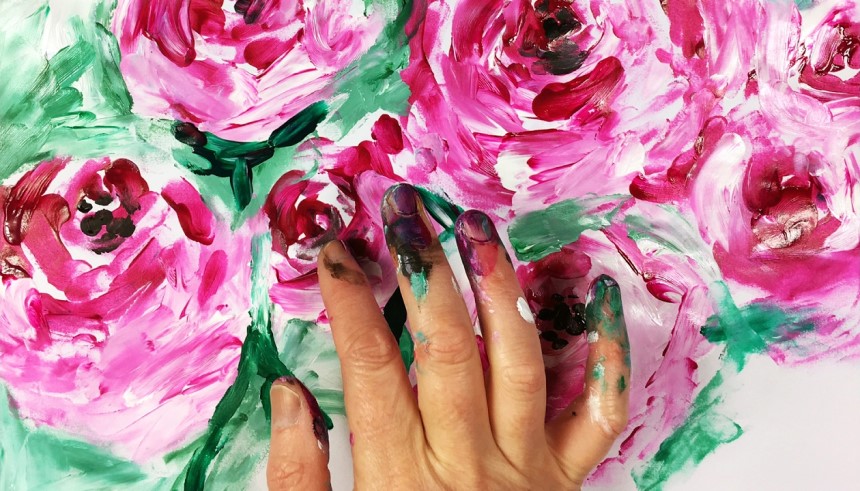 This technique is ideal for an array of fabrics. You can work on multiple projects at a go using this method as it is not limiting when it comes to the material you can work on. This is one of the oldest techniques among those that we discuss herein. It was introduced as an art education medium in the USA in the school systems. Over time, it spread to households and become popular as it is easy to learn and apply. Finger painting is a rigorous process that requires you to be intentional about the designs you create to avoid messing up the work in progress.
This technique is ideal for an array of fabrics. You can work on multiple projects at a go using this method as it is not limiting when it comes to the material you can work on. This is one of the oldest techniques among those that we discuss herein. It was introduced as an art education medium in the USA in the school systems. Over time, it spread to households and become popular as it is easy to learn and apply. Finger painting is a rigorous process that requires you to be intentional about the designs you create to avoid messing up the work in progress.
You can work on simple patterns for a start, then gradually try out the complex layouts as you understand the craft. You use your fingers to paint, but you may need other tools to ensure that your work is clean.
 A visual outline is a group of lines that define a shape or figure without getting into the finer details of the subject. Outliners are available in stores to help make this process easier. You can also make them if you understand the dynamics that go into creating the same. You can also use a thin brush or permanent markers to outline paint your fabric. The designs can be undemanding or complex, depending on what you are working on. You have to decide on several factors to develop an appropriate format. The composition could include straight lines, zig-zag, or broken ones as dictated by the project’s needs. You can also use a thin brush or markers with the appropriate tip. Creating designs is more manageable with this technique, and both beginners and seasoned painters can incorporate this method with another to achieve better results.
A visual outline is a group of lines that define a shape or figure without getting into the finer details of the subject. Outliners are available in stores to help make this process easier. You can also make them if you understand the dynamics that go into creating the same. You can also use a thin brush or permanent markers to outline paint your fabric. The designs can be undemanding or complex, depending on what you are working on. You have to decide on several factors to develop an appropriate format. The composition could include straight lines, zig-zag, or broken ones as dictated by the project’s needs. You can also use a thin brush or markers with the appropriate tip. Creating designs is more manageable with this technique, and both beginners and seasoned painters can incorporate this method with another to achieve better results.
 When talking about fabric painting, the watercolor technique will not fail to come up. This is because it is one of the standard methods that people from different walks of life understand. You can use this to make beautiful designs on clothes and other home items that are fabric. Before you embark on the project, try out the techniques you want to use on a swatch of fabric. Try out different materials to see how the watercolors react with the fabric. You can use brushes and work on the designs, or you can choose other techniques such as tie and dye to achieve the desired results. Using a brush can be hectic for those who have not mastered the art. Medium weight and light materials are compatible with this method of painting on fabric.
When talking about fabric painting, the watercolor technique will not fail to come up. This is because it is one of the standard methods that people from different walks of life understand. You can use this to make beautiful designs on clothes and other home items that are fabric. Before you embark on the project, try out the techniques you want to use on a swatch of fabric. Try out different materials to see how the watercolors react with the fabric. You can use brushes and work on the designs, or you can choose other techniques such as tie and dye to achieve the desired results. Using a brush can be hectic for those who have not mastered the art. Medium weight and light materials are compatible with this method of painting on fabric.
Follow the manufacturer’s guidelines on how to mix the color with water to get the best results.
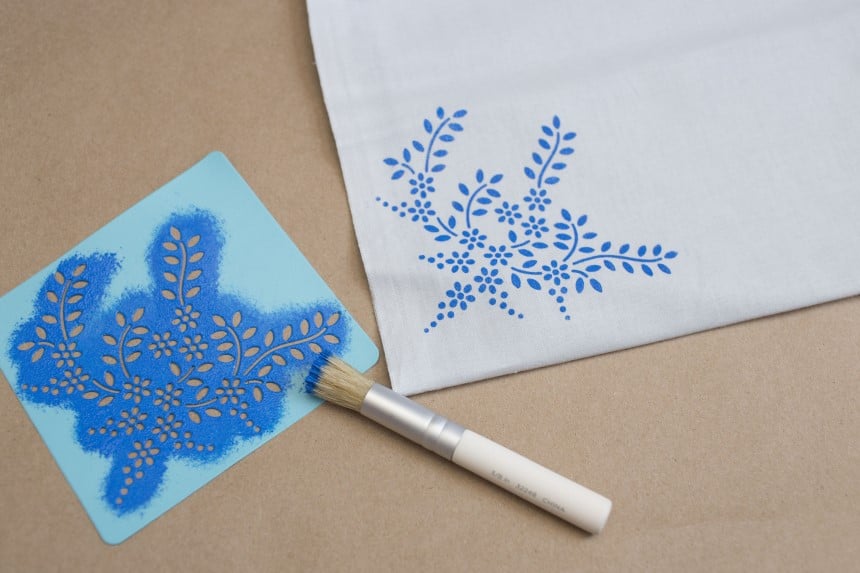 This is one of the easiest techniques that anyone can use to create designs on fabric, whether they have tried painting before or not. The stencil is a thin sheet of plastic, metal, or paper that allows the paint to get to specific areas of the fabric as dictated by design. You can use different types of color, including watercolors and sprays, to get the design imprinted in the material. You need a stencil brush to make your work more manageable. Do not try forcing paint under the edge of the stencil, as it will ruin the design. You can rely on spray stencil adhesives to hold the pattern in place to guarantee clear-cut work. When buying stencils, choose durable ones. If possible, go for a set with different designs that you can utilize for multiple projects.
This is one of the easiest techniques that anyone can use to create designs on fabric, whether they have tried painting before or not. The stencil is a thin sheet of plastic, metal, or paper that allows the paint to get to specific areas of the fabric as dictated by design. You can use different types of color, including watercolors and sprays, to get the design imprinted in the material. You need a stencil brush to make your work more manageable. Do not try forcing paint under the edge of the stencil, as it will ruin the design. You can rely on spray stencil adhesives to hold the pattern in place to guarantee clear-cut work. When buying stencils, choose durable ones. If possible, go for a set with different designs that you can utilize for multiple projects.
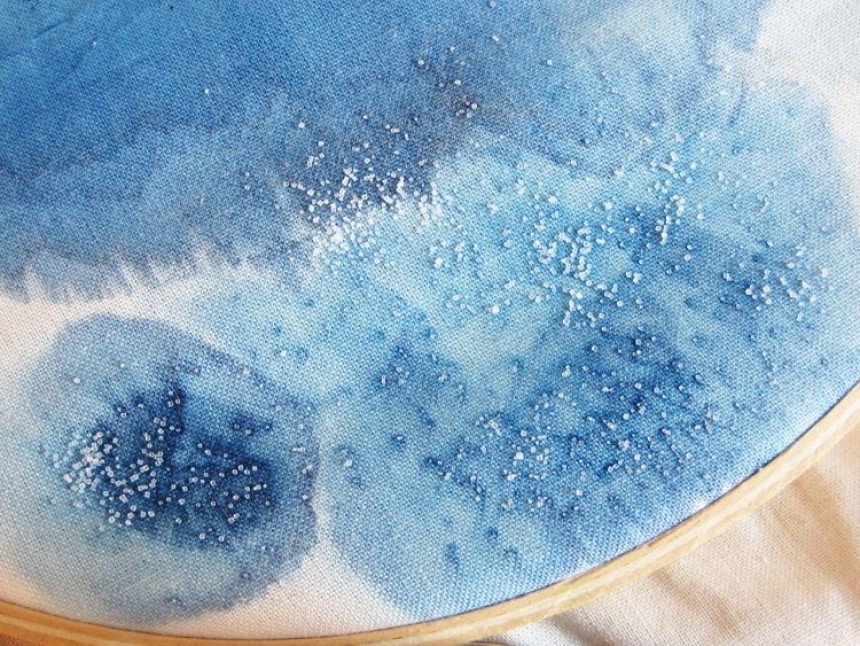 When crystals of salt meet with wet paint, they create a reaction with, the same leading to a starburst effect that improves the art considerably. The salt absorbs the dye as it dries, creating halo effects that are textured. After you apply the paint on your fabric, sprinkle puffed crystal salt on top to help achieve the sought-after outcomes. Cotton and silk are the two fabrics that work well with this technique. For cotton, the fabric has to be stretched out for the salt crystals to function. If the material you are working with is thick, the results may not be as you expect. You can use different sizes of crystals to get different results.
When crystals of salt meet with wet paint, they create a reaction with, the same leading to a starburst effect that improves the art considerably. The salt absorbs the dye as it dries, creating halo effects that are textured. After you apply the paint on your fabric, sprinkle puffed crystal salt on top to help achieve the sought-after outcomes. Cotton and silk are the two fabrics that work well with this technique. For cotton, the fabric has to be stretched out for the salt crystals to function. If the material you are working with is thick, the results may not be as you expect. You can use different sizes of crystals to get different results.
Batik is a Javanese method that has been in use for many years in different parts of the world. This technique involves the use of wax resist and paint on fabric. You apply the wax to the material to create an impenetrable layer to protect parts of the fabric. The waxed areas retain the original color of the fabric while the others get the one you apply. You can keep repeating this process until the colors you want to include part of the fabric. Use cardboard pieces between the garment or cloth to prevent the dye you apply from bleeding to the other side, distorting your patterns. The quality of the wax you use is a vital factor that you cannot overlook, as this dictates the overall outcome of batik painting.
Painting on fabric requires one to have the necessary expertise to make the venture a success. However, this does not mean that beginners cannot use the various techniques available in the contemporary world. You can explore the numerous alternatives present if you have the necessary skills in using a particular method in fabric painting. Evaluate your needs and the talent available in your human resource to determine the best designs to go for and the tools to buy.
Choose products from reputable manufacturers to guarantee the quality of your work. Whether you are buying fabric glue or any small supply, ensure that it is from the best in the market. Some producers in this industry include instructions on how to paint on fabric in the package you receive.